Lakehouse increases the accessibility of event data generated by consumer facing experiences by allowing teams to define table schema and use SQL to map event data to these tables, making it actionable.
My role
User Flows, UI Design, Interaction Design, Prototypes, User Research, User Testing, Design Leadership
Results
- Reduced tooling costs by 500k per year
- Reduced the time to build data models by 70%
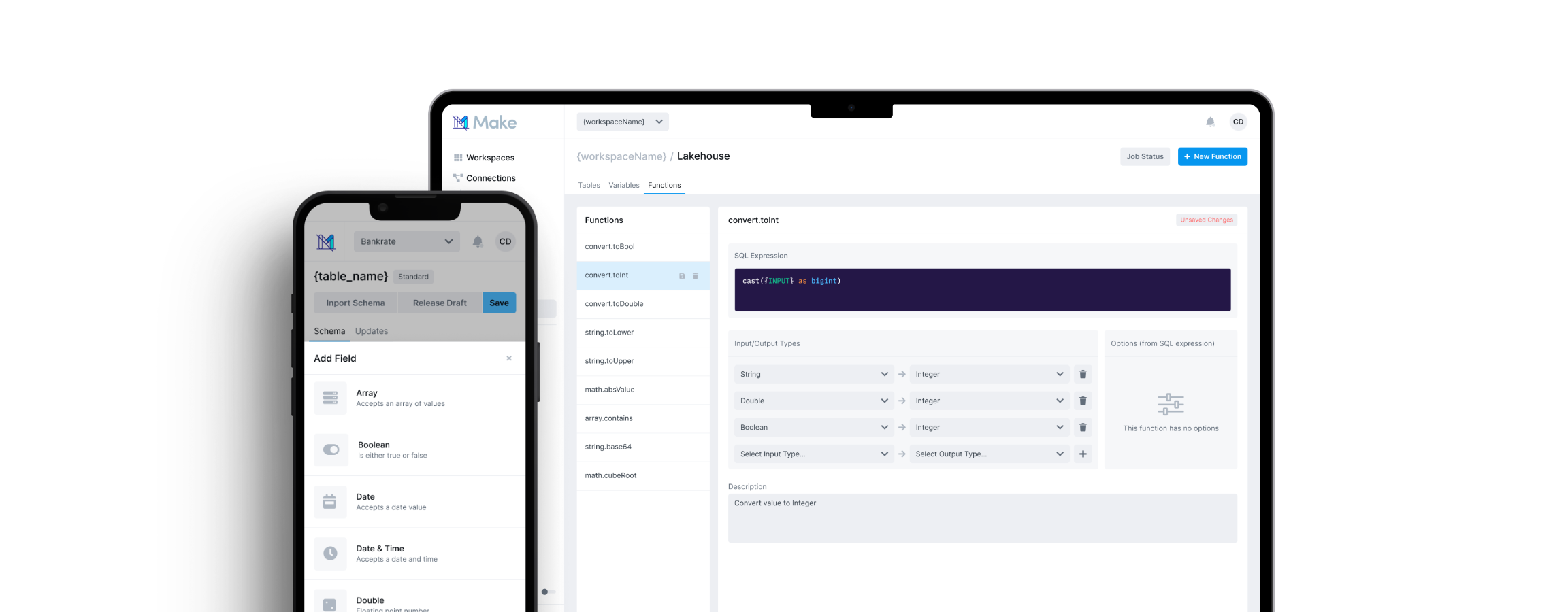
I came to the team to take the app design from proof of concept to MVP. With no active users, I focused research on prospective teams to learn what they needed when building schemas or updating tables.
Although we didn’t have active users, there were several teams lined up to use the app when it became available. I conducted research with these potential users helping me understand how current tools were used to accomplish similar tasks.
Working closely with engineering and product we defined MVP requirements and roadmap phases for the tool. I led end-to-end creative, collaborating with the team to improve usability and align to our goals of making data accessible and actionable.
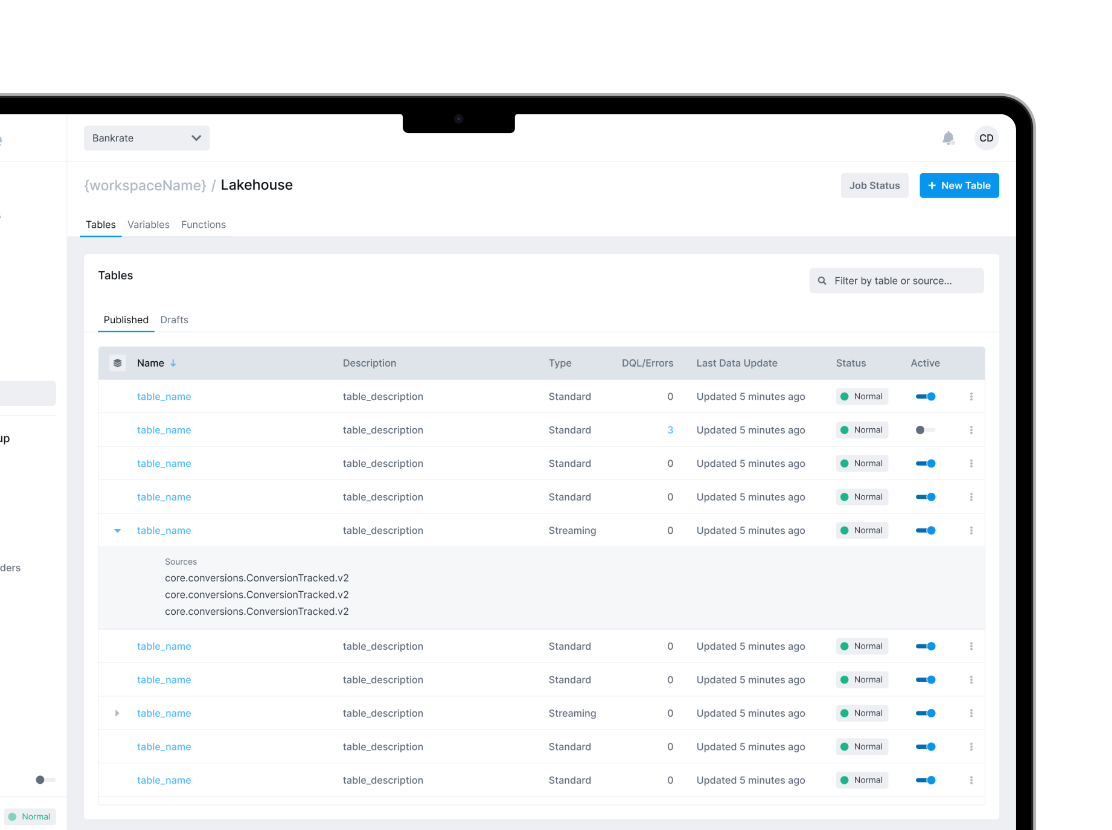
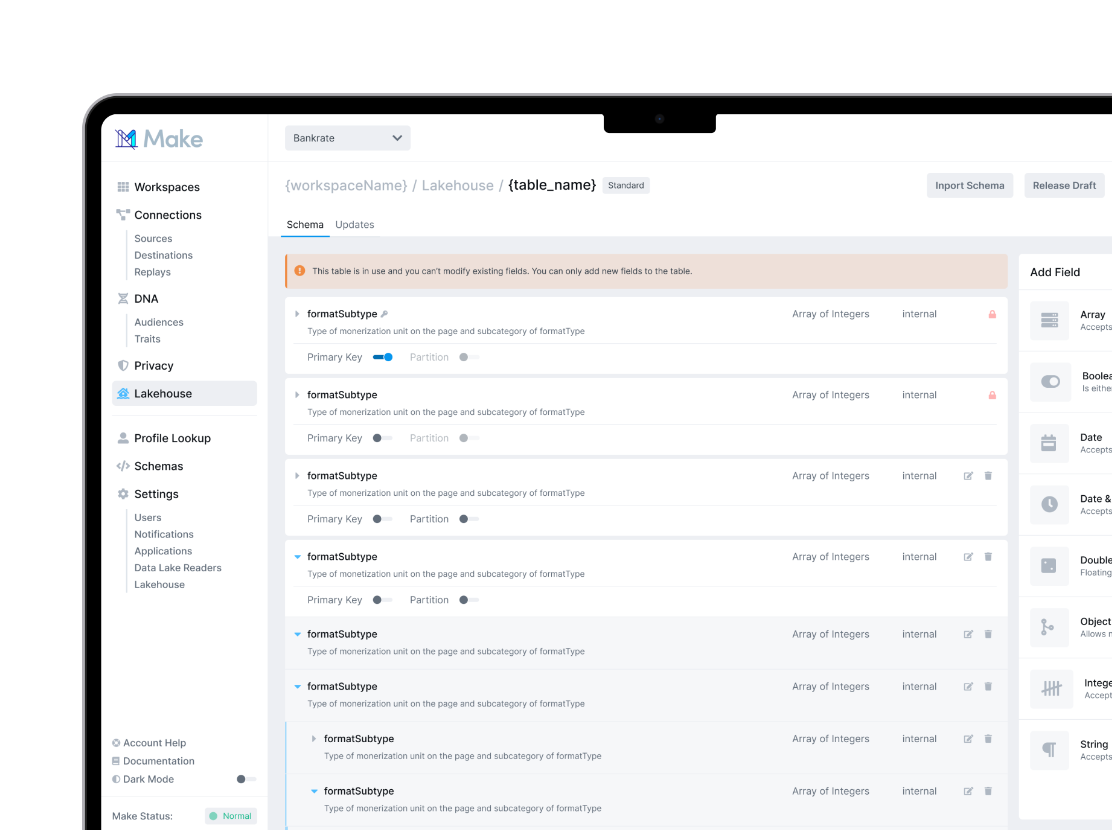
Schemas defined the table structure teams needed to use data. My schema editor enhanced the clarity of table structure and field types and let users import schema increasing their efficiency.
I worked with engineering to understand the constraints around building schema and the pain points users had with similar tools. The schema builder I created provided users with increased clarity of what field types were available, what those fields did, and how a table was structured.
Initially, the ability to import schema wasn’t part of our scope. Since our tool was tied tightly to event payloads with existing schema, we added imports. I designed and prototyped experiences to import schema from an existing event or custom JSON, significantly boost user efficiency.
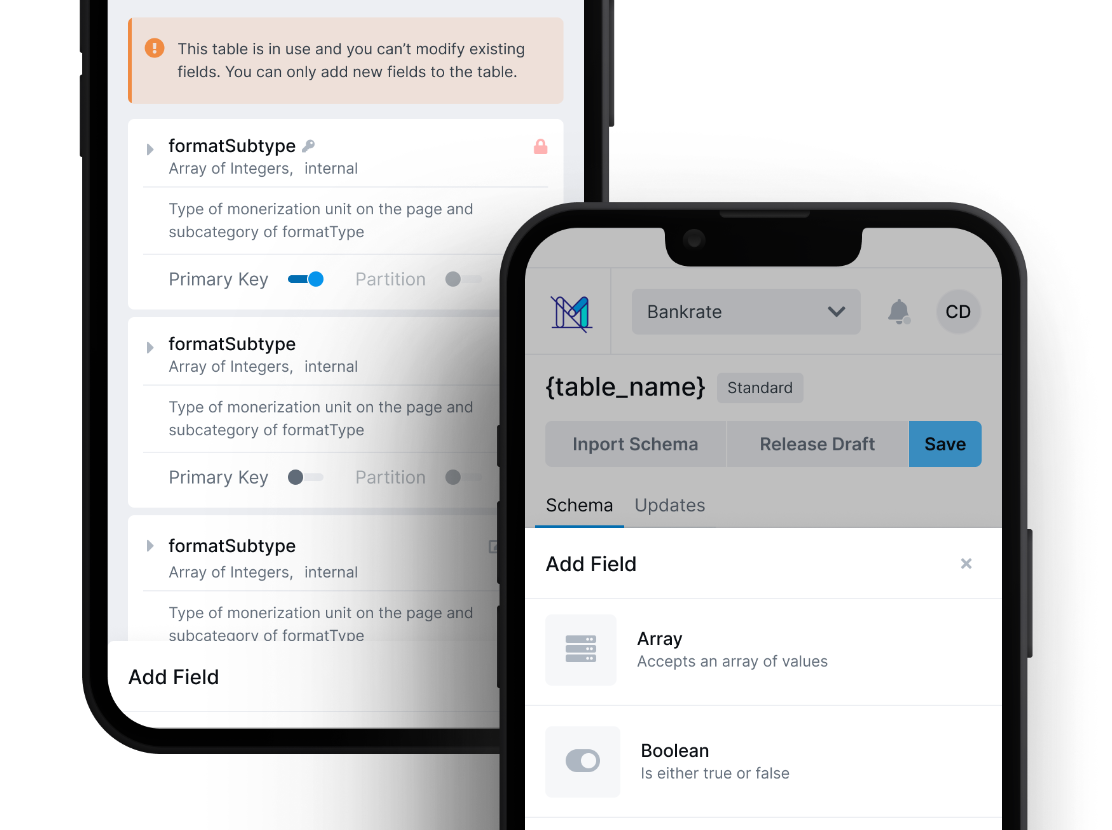
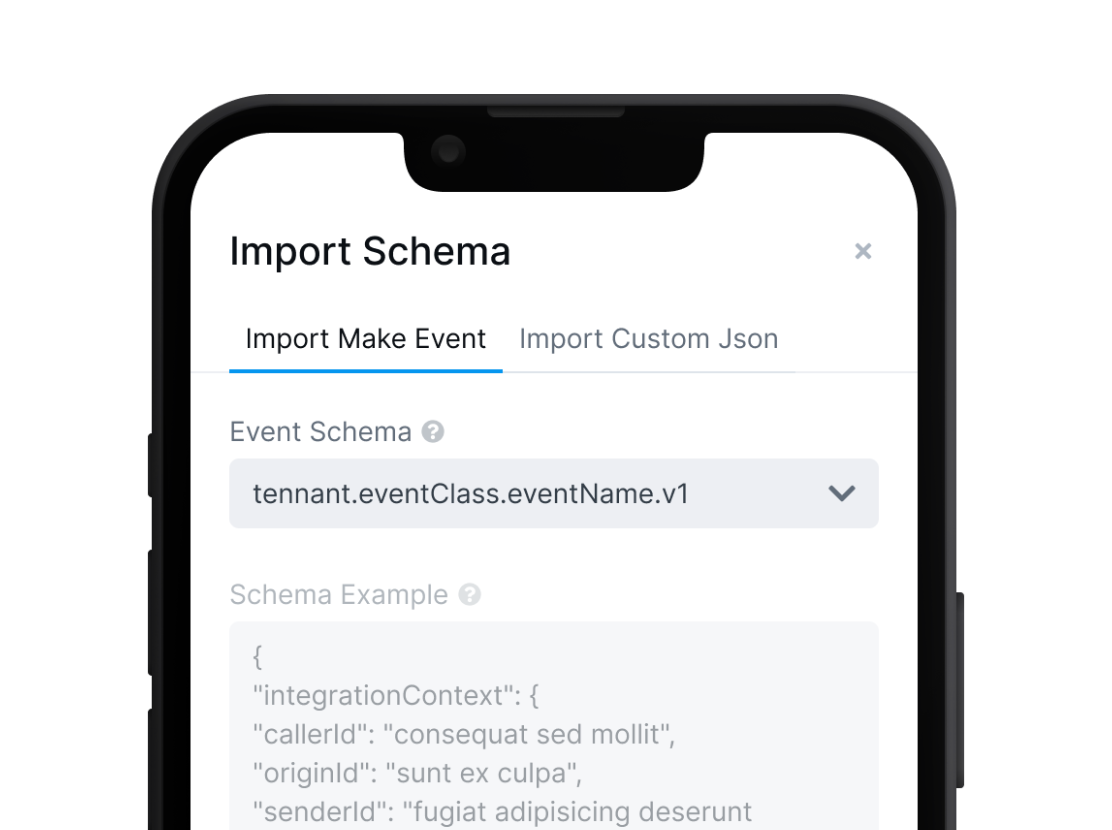
Updates controlled how raw data sources mapped to tables, making data actionable, but were difficult to use due to little feedback. I designed UI that surfaced critical information and improved usability.
I iterated through prototype interactions for two methods of providing table updates, a simplified method that ran a SQL query from a source table or tables and merged the results into the Lakehouse table and a streaming method where users defined source events, applied transformations, and mapped source data to a specific field in the destination table.
For both of these interactions, a key pain point to resolve was lack of feedback: it was unclear how many sources were defined or updates were running. To resolve this I designed a list view that allowed our users to quickly see what was happening, select what they needed to update and make changes.
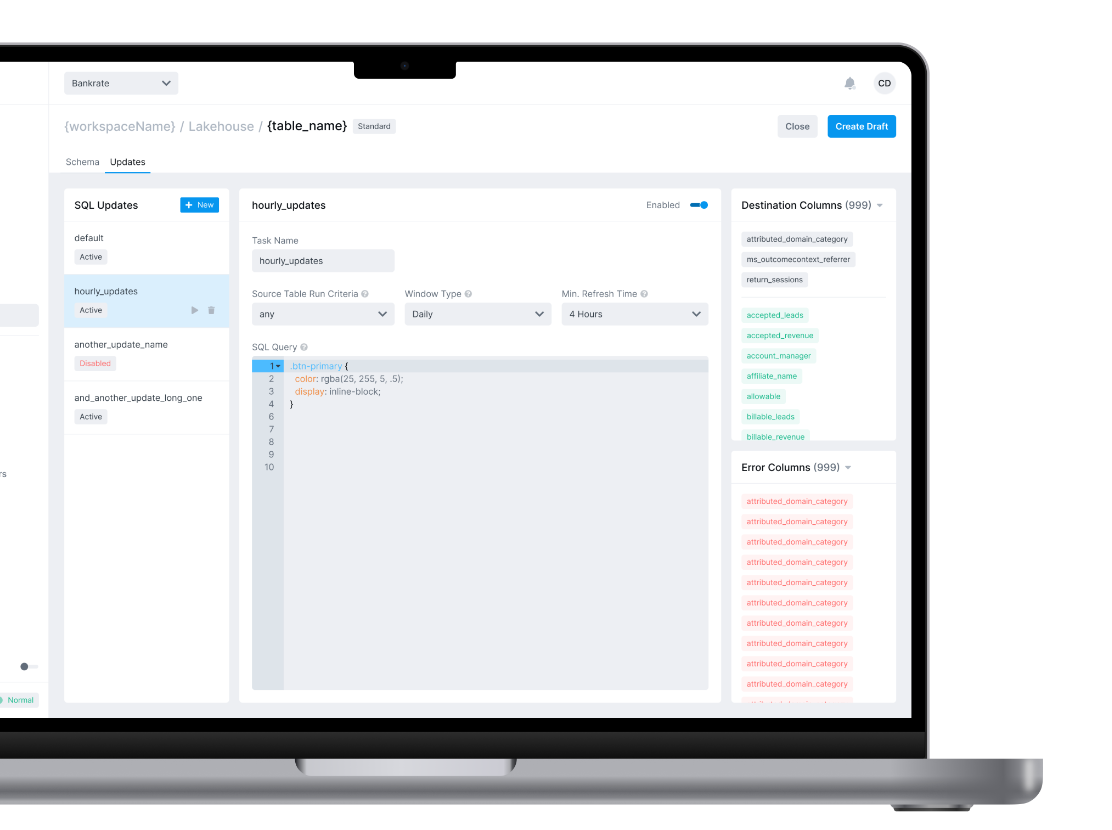
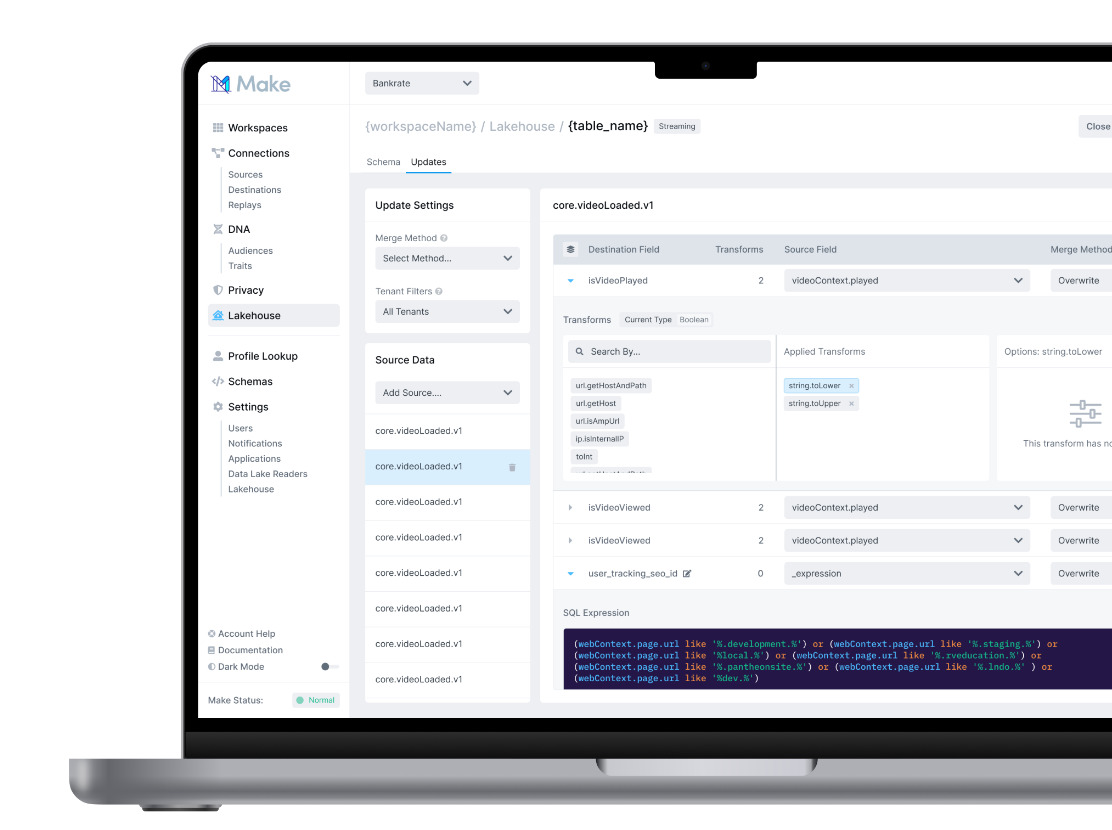
Late in the project, we identified that a draft system was critical to teams adopting the app. I worked with the engineering and product teams to define scope and successfully implement this new feature.
It was critical for the draft feature to be part of the MVP launch to ensure teams could adopt the tool. A key pain point was data accuracy and businesses were concerned that without a draft process, bad data would be introduced.
I worked with engineering to understand what technical limitations we had and aligned with our potential users around a feature set that would meet their needs. I designed a draft system that let teams update tables and test changes using live traffic without affecting production data.
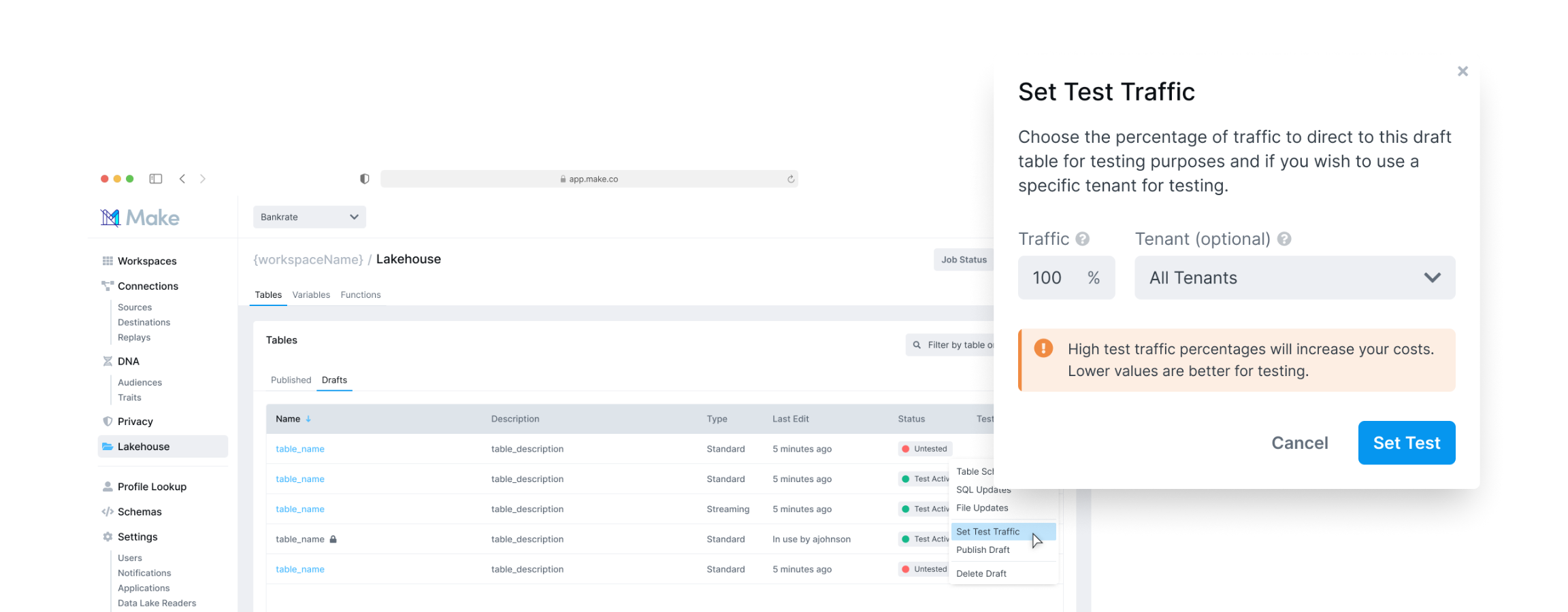
Lakehouse reduced the time to build data models by 70% and the time to run complex queries from minutes to seconds resulting in $500K per year savings as teams switched from more expensive platforms.